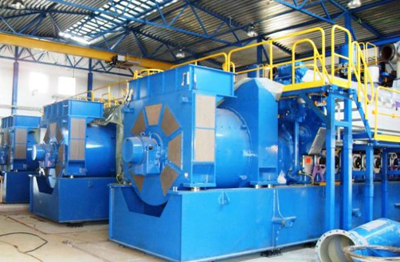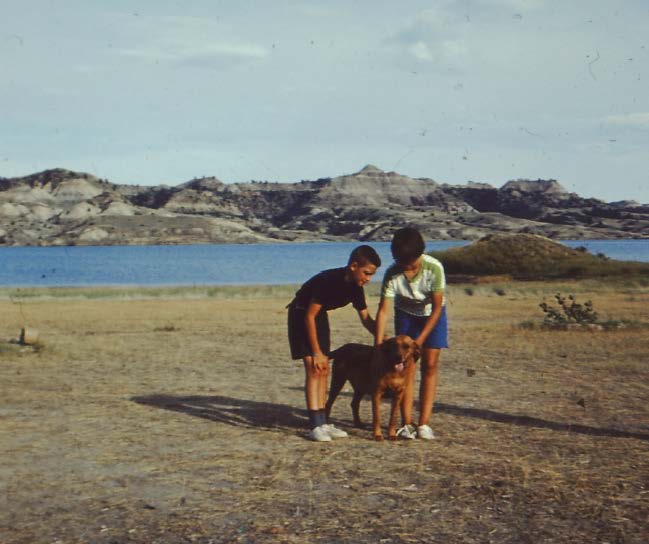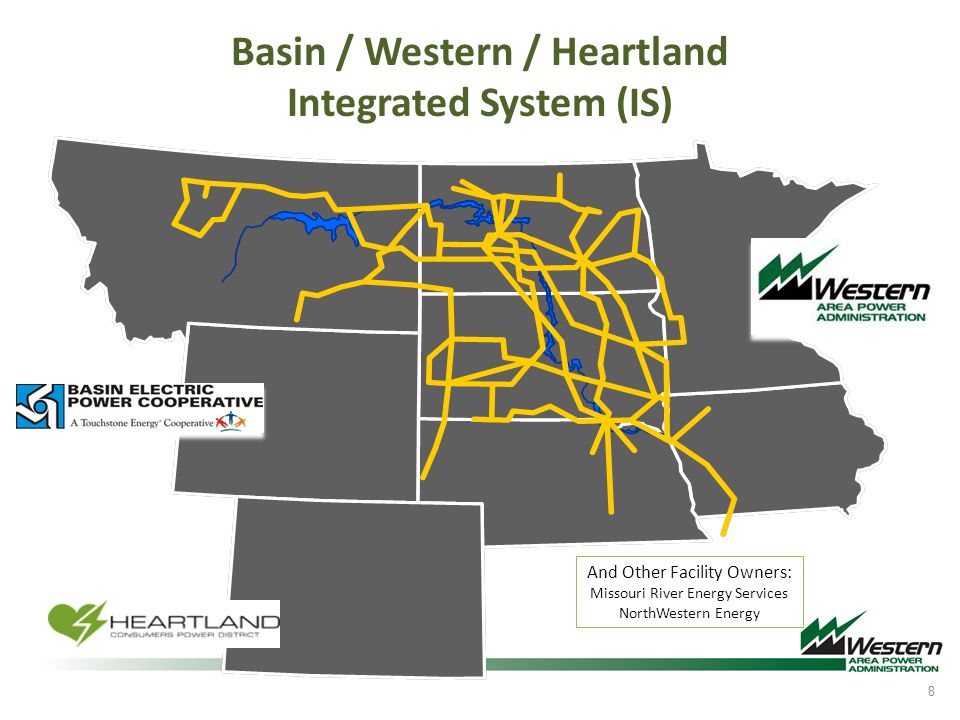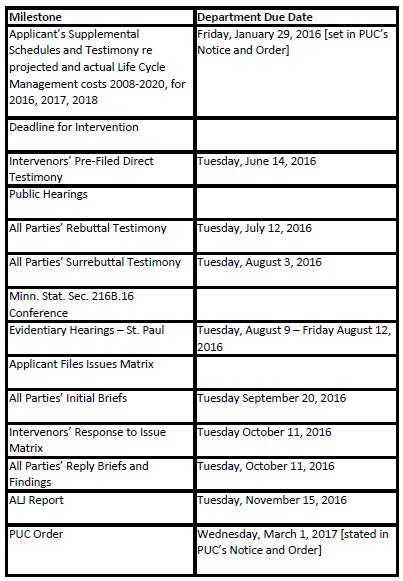Peaking gas generator for Rochester
July 6th, 2016
 Way back during the CapX 2020 proceeding, it became clear that Rochester Public Utilities planned to build gas generation just west of town, at the “Westside” site. But this was downplayed, and ignored by the ALJ, because it would be evidence that CapX 2020 wasn’t “needed.” And of course demand was way down, which we knew but which was also ignored, and that was one more reason CapX 2020 wasn’t needed. The Rochester gas generation was delayed.
Way back during the CapX 2020 proceeding, it became clear that Rochester Public Utilities planned to build gas generation just west of town, at the “Westside” site. But this was downplayed, and ignored by the ALJ, because it would be evidence that CapX 2020 wasn’t “needed.” And of course demand was way down, which we knew but which was also ignored, and that was one more reason CapX 2020 wasn’t needed. The Rochester gas generation was delayed.
But recently they announced the new gas pipeline around the city, and now, the gas plant. Today, from the MPCA:
Intent to Construct Air Emission Permit for Rochester Public Utilities Westside
PUBLIC NOTICE – 10901028-101 – 2016.pdf
DRAFT PERMIT – 10901028-101 – 2016.pdf
TSD – 10901028-101 – 2016.pdf
Open for public comment through Thursday, August 4, 2016
MPCA requests/expects certain things to be addressed in Comments, “you must state” per the MPCA:
(1) Your interest in the permit application or the draft permit.
(2) The action you wish the MPCA to take, including specific references to the section of the draft permit you believe should be changed.
(3) The reasons supporting your position, stated with sufficient specificity as to allow the MPCA to investigate the merits of the position.
Send Comments to:
Rachel Yucuis
Industrial Division
Minnesota Pollution Control Agency
520 Lafayette Rd
St. Paul, MN 55155
Phone: 651-757-2863
Email: rachel.yucuis@state.mn.us
Hydro power, old generation flooding the Great Plains
May 27th, 2016
50 years ago, on a family vacation, we went to Ft. Peck, stayed at Hell Creek State Park, which more than lived up to its name then, with miles and miles of nothingness, except for the Park Ranger and his trusty pup. He’d spent his day shooting rattlesnakes, he had a bagfull of them, and showed them to us, advising that we keep an eye open! The coolest, and hottest, camping experience ever. So of course I’ve wanted to go back, and this is the perfect time. It’s cool at night, and it had rained the night before, and it was SO green, blinding, and not at all like the desolate wasteland I’d remembered. Same spot 50 years later… (how did THAT happen?)
The park is in a pickle, seems there’s no money available for needed improvements, like a single phase line that’s at capacity (AACK, just found a tick! Now it’s a dead tick!), septic over capacity, and tens of thousands of folks come there to fish. They put together a “Master Plan” but it wasn’t clear the purpose, and instead of being a Master Plan, I think it was a way to set out the issues facing the Park and to try to figure out what to do about it.
Hell Creek State Park (Montana) – Comments due 11/25
I don’t get it, it’s a foreign world to me. Everyone there had a big honkin’ pick up truck, and a 5th wheel and towing a big boat that probably cost more than my house! And if they didn’t have the three part rig, they pulled a YUGE trailer and a friend pulled the YUGE fishing boat. To get there, it’s a 26 mile drive over washboard gravel, with so much dust that I don’t know if it will ever come out of the van. Washing it might induce a mudslide!
Not all that far away in miles, but a trip out and back over that long dirt road, is the Ft. Peck dam and power house, and so of course I called up and arranged a tour. Very cool, but no photos allowed. I recognized the museum, the first part of the tour, from 50 years ago, back in the days when we took family “utility infrastructure” trips. And guess who worked on the dam?
![20160524_151925[1]](https://legalectric.org/f/2016/05/20160524_1519251-1024x576.jpg) There are two power houses, one, the oldest, with three turbines and a 105 nameplate capacity, and two in power house #2, which have a 80 MW capacity. One of the turbines in unit 1 is being replaced, is much smaller, but will be much more efficient and have a higher capacity.
There are two power houses, one, the oldest, with three turbines and a 105 nameplate capacity, and two in power house #2, which have a 80 MW capacity. One of the turbines in unit 1 is being replaced, is much smaller, but will be much more efficient and have a higher capacity.
Ft. Peck is the largest earthen dam in the world! The Army Corps built a handful of dams on the Missouri, Ft. Peck, Tarrison (400 MW)(where we are now), Oahe (595 MW), Big Bend (468 M), Ft. Randall (320 MW), and Gavins Point (100 MW). Most of these are probably overdue for serious rehab.
Between all of these dams, there’s some serious power generation going on, but there’s also a problem with low water levels, putting generation at risk and requiring a FERC docket to address allocation. And of course, I was wondering where they sell the power, and it’s operated by the Army Corps to this day, and power is sold through the Pick-Sloan Missouri Basin Power Marketing Area and Western Area Power Authority (WAPA). Dispatch is supposed to happen out of a complex in Watertown, SD. Transmission out of Ft. Peck runs mostly east, but some to the west! From Ft. Peck, there are two 115kV lines, one 230 kV line, one 161 kV line, one 69 kV line, and one 34.5 kV line. Of the big collection of dams, there’s a transmission network moving the energy around:
Little is said about the impact of the flooding on the Assiniboine Nation, which met Franklin D. Roosevelt on August 6, 1934, to address those issues when he came out to cheer on the construction efforts. Now there’s “Ft. Peck” Reservation, north and east of the dam. The impacts of flooding on First Nations was part of the FERC docket regarding allocation, because a decrease in output and change in allocation will likely have an impact on local residents:
PICK-SLOAN MISSOURI BASIN PROGRAM Eastern …
From the “Answers” to comments, it seems FERC didn’t see it the same way:
And now we’re on to our second dam of the trip, Garrison Dam, and Ft. (not Grant) Stevenson, which has a great campground. Very nice, though sites are too close together. And once again, everyone has these huge rigs, some crammed in 3 to a space, circling the wagons, with a big campfire in the middle where they all hang out. I can’t help but snort, because many don’t know how to back up!!! There oughtta e a law, can’t back up — can’t go forward. And campgrounds accommodate these sorts of folks by making half the sites pull-throughs.
So anyway, on to the Soudan Mine and neutrino lab. How much fun can I stand?
More Clean Power Plan meetings announced
February 16th, 2016
Today the MPCA announced several new public “listening sessions” regarding the Clean Power Plan. There are no rules yet proposed, but there have been many “stakeholder” meetings thus far, listed below. Note there’s one in Rochester on March 9.
And because of the recent U.S. Supreme Court decision, it’s “up in the air,” though Gov. Dayton has pledged to carry on.
Meetings from today forward are an open house at 5:30 p.m. and the meeting beginning at 6:30 p.m.:
Upcoming meeting locations:
- February 16: Bemidji State University, the American Indian Resource Center’s Gathering Place, Bemidji (event flyer here)
- February 23: University of Minnesota–Duluth, Swenson Civil Engineering Building, Rooms 265/231, Duluth (event flyer here — updated with the full building name)
- February 24: Southwest Minnesota State University Conference Center, Upper Ballroom, Marshall (event flyer here — updated with the new date)
- March 2: The Wellstone Center, St. Paul (event flyer here)
- March 8: Minneapolis Urban League, Minneapolis (event flyer here)
- March 9: Centerstone Plaza Hotel, Rochester (event flyer here)
There will be a rulemaking, but they’re not planning on forming an Advisory Group (which I think should be done), so that means that when they present the rule, it’ll pretty much be a done deal, SO that’s why the stakeholder meetings and info listed below is important, and that’s why you should go to these meetings and speak up.
If you have questions about the rulemaking or anything else regarding the Clean Power Plan, sign up for email notices through GovDelivery.Contact. For questions about the status of the MPCA’s rulemaking contact Katie Izzo at katie.izzo@state.mn.us or by phone at 651-757-2595.
Clean Power Plan stakeholder group info:
Wabash Valley coal gasification plant closing!
January 13th, 2016
The Wabash Valley IGCC (coal gasification) generating plant was built as a demonstration project, and oh what a miserable failure that was. Such a failure that they’re now shutting down the coal gasification part and will be running only on natural gas.
After it was “finished” it took years of work, with at times 22 engineering contractors, to cobble it together and make it run. It rarely ran at capacity, and often didn’t run at all. Operating costs were through the roof. It also exploded and killed two workers, which made headlines just as our opposition to the Mesaba Project was getting into full swing, yet that explosion was just the tip of the iceberg in the many problems with this project.
Wabash River IGCC plant explodes, two workers killed
More on coal gasification plant explosion
Coal gasification explosion: metal fitting broke, released gas
Wabash River Final Technical Report(it was “routinely” in violation of its water permit for selenium, cyanide and arsenic)
And here’s the good news — IT’S SHUTTING DOWN FOR GOOD!
47 employees will be laid off. Wabash Valley Power Association to cease operations at sgSOLUTIONS
And:
Xcel’s 15-826 Rate Case moving forward
December 30th, 2015

“Northern States Power d/b/a Xcel Energy” filed a rate case with the Minnesota Public Utilities Commission, PUC Docket 15-826. You can see all the filings — GO HERE TO PUC SEARCH PAGE — and search for docket 15-826.
Prehearing Conference
Monday, January 4 at 1:30 p.m.
PUC Large Hearing Room – 3rd Floor
121 – 7th Place E.
St. Paul, MN 55101
Xcel is asking for a big increase, and they admit it’s transmission driven. So yes, I’m interested, you betcha. No CapX 2020 and Carol A. Overland (as individual) have intervened:
So far, here’s what’s been happening:
A rough schedule has been proposed by Commerce DER, which will be hashed out at the Prehearing Conference, and probably altered as the case moves forward:
The PUC Staff Briefing Papers for last Thursday’s meeting:
Staff Briefing Papers_1_201512-116122-01
Staff Briefing PapersAddeudum_1_201512-116402-01
Staff Briefing Papers Addendum_2_ PI Decision Options_201512-116402-02
Here’s the webcast: Video – should be good for 90 days from Dec. 10
Video – Docket 15-662 — Rate Design — video at 00:15:00 – 02:20:00
Video – Docket 15-826 — Rate Case — starts at 02:20:00
There has been one other intervention — “The Commercial Group” which is the biggies, like Walmart. There have been several Notice of Appearances filed, but not interventions. ???
The AG’s Office has been the only one filing challenging comments thus far, which is why I have felt the need to barge in. The “usual suspects” have been part of the e21 nonsense, and other agreements in the past that have both compromised their position and not been in the public interest. Here are the AG Comments thus far. RUD is dead on about NSP/Xcel’s overstatements, and those proven overstatements should be sufficient to grind this thing to a halt and get on more realistic terms:
This is just Minnesota. Obviously there will be a similar proceeding in Wisconsin in the very near future.
And given this rate case is transmission driven, the linkage between the FERC approved MISO rate and the reduction of return on equity in the FERC docket will have to be addressed:
Lower Return on Equity for Transmission
December 29th, 2015
Onward!

![20160525_172116[1]](https://legalectric.org/f/2016/05/20160525_1721161-1024x576.jpg)
![20160524_161657[2]](https://legalectric.org/f/2016/05/20160524_1616572-1024x576.jpg)




